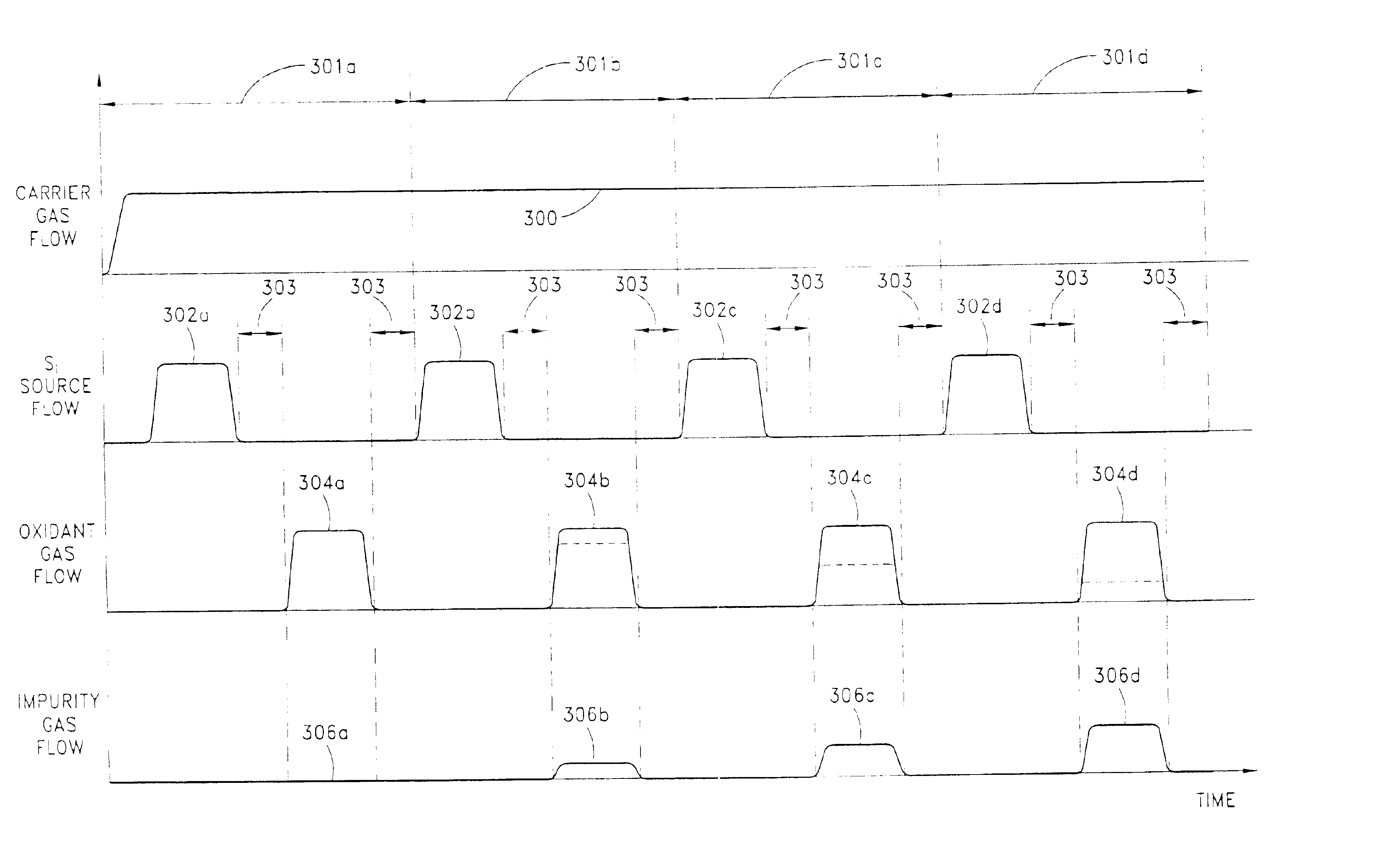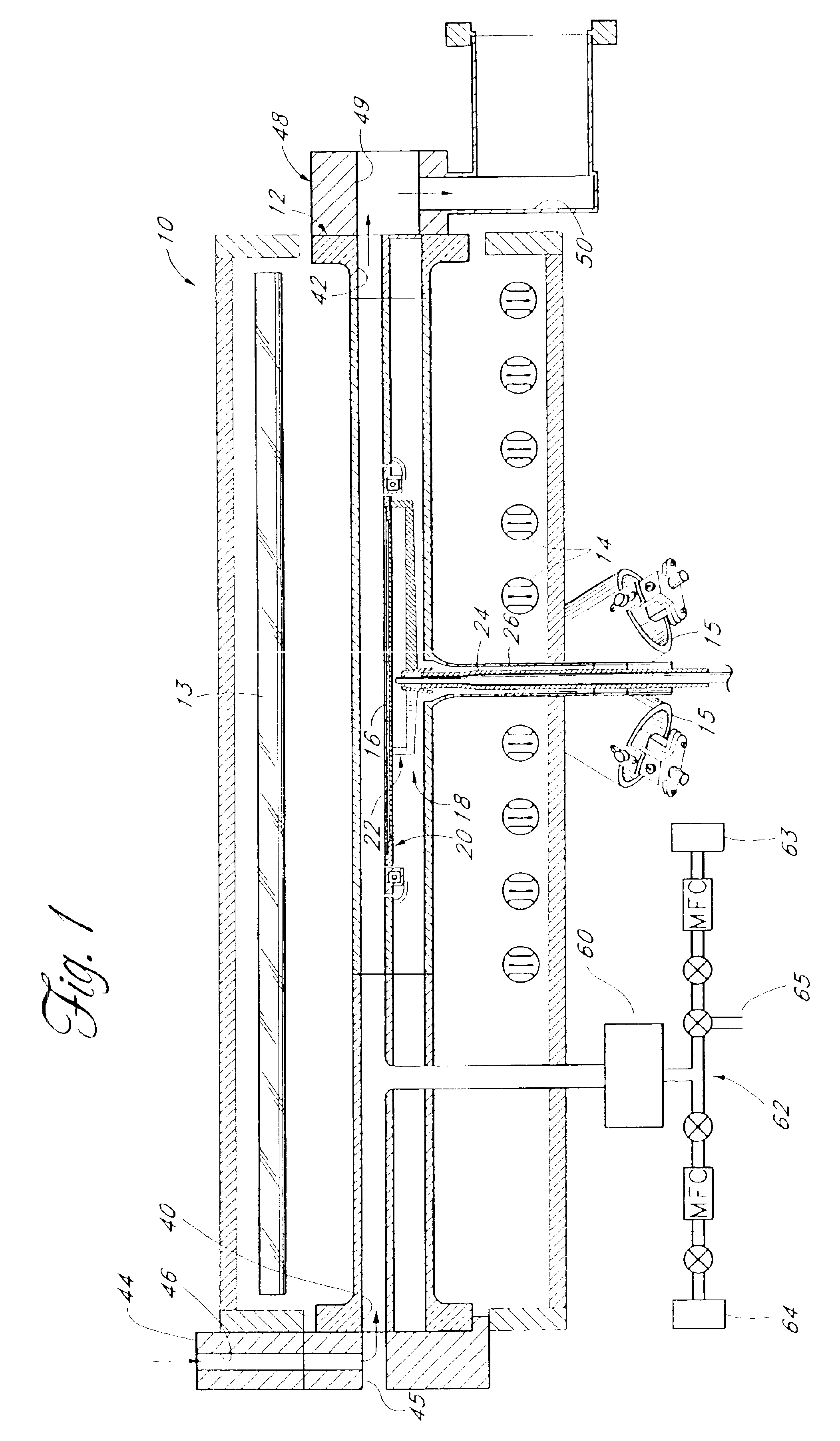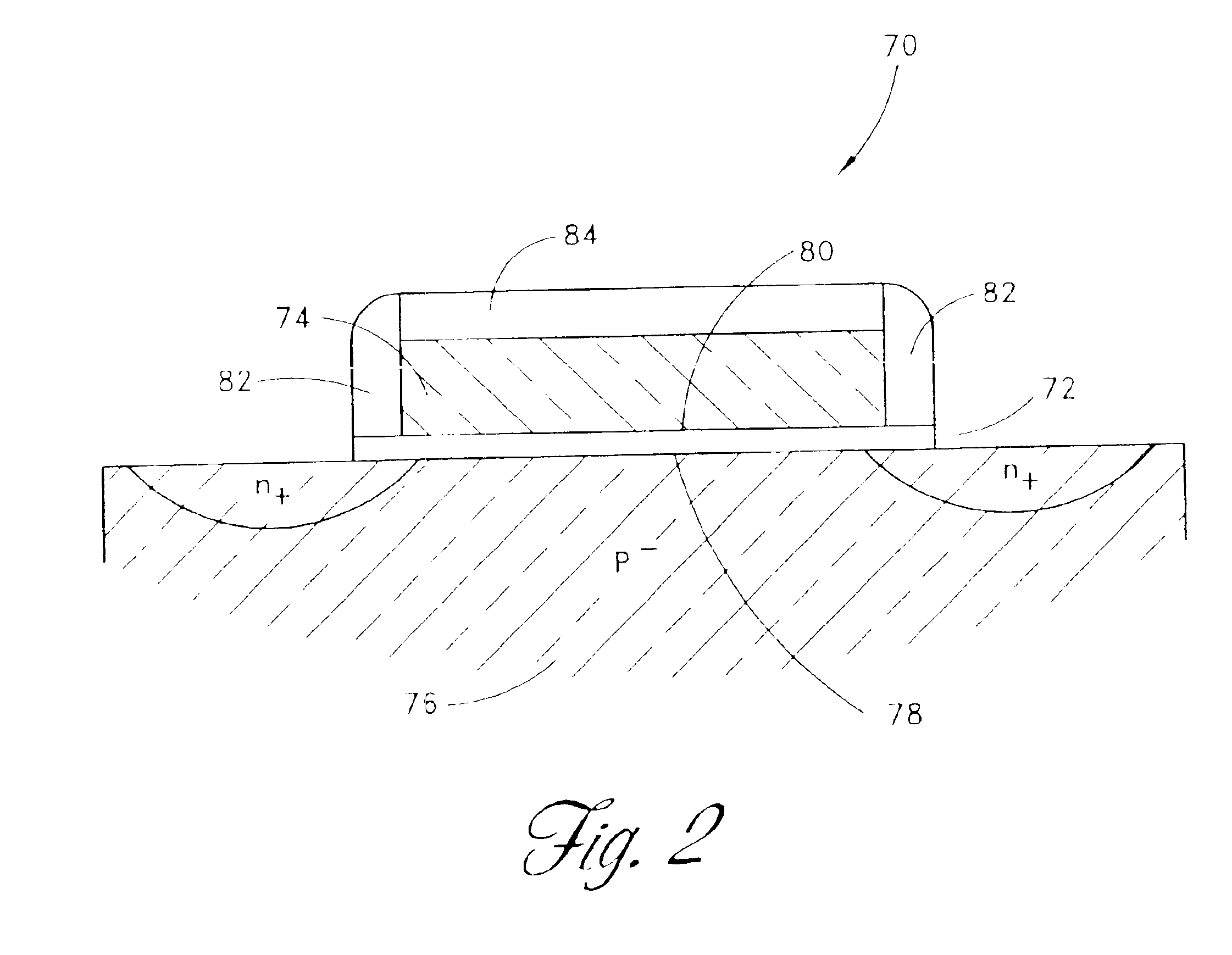Graded thin films
a thin film, grade technology, applied in the direction of chemical vapor deposition coating, crystal growth process, coating, etc., can solve the problems of extremely thin silicon dioxide gate dielectrics, electrons exhibit a finite probability of crossing the barrier, and conventional gate oxide layers may be inadequate in several respects
- Summary
- Abstract
- Description
- Claims
- Application Information
AI Technical Summary
Benefits of technology
Problems solved by technology
Method used
Image
Examples
second embodiment
[0045]For the first illustrated embodiment, gas sources include tanks holding a silicon-containing gas, preferably a silane such as monosilane (SiH4), silicon tetrachloride (SiCl4), dichlorosilane (DCS or SiH2Cl2), trichlorosilane (TCS or SiHCl3), or other silane or halosilane silicon sources; an oxidant source gas, such as O2, O3, O radicals, H2O, NO or N2O; and a nitrogen source gas, such as NH3. Metal source gases can also be employed for deposition of high k metal oxides. For the second embodiment, source gases include one or more metal source gases (e.g., WF6, TiCl4, CuCl, etc.), a nitrogen source gas (e.g., NH3) and a reducing agent (e.g., triethyl boron or TEB).
[0046]The silicon sources can include a bubbler and a gas line for bubbling H2 through a liquid solution such as TCS, to more effectively transport silicon-containing gas molecules to the reaction chamber in gaseous form. Many metal sources can similarly include liquid solutions and bubblers. The reactor 10 can also in...
first embodiment
[0053]The first embodiment involves alternating adsorption of no more than about a monolayer of silicon with oxidation of the previously adsorbed monolayer in an alternating layer silicon oxide process. During the oxidation stage, nitrogen can also be selectively incorporated. Essentially, by mixing these two gases, oxynitride films with any desired ratio of oxygen to nitrogen can be grown. In the preferred embodiment, varying reactant ratios during the cyclical process, the composition formed by each cycle can be tailored. Most preferably, the deposition begins with pure silicon oxide and ends with pure silicon nitride, with any desired grading through the thickness.
[0054]The substrate upon which deposition is to occur is initially prepared for the self-limiting deposition process. In the illustrated embodiment, the substrate is a semiconductor material in which a transistor channel is formed. The semiconductor substrate can be formed of an epitaxial layer or formed of the top port...
PUM
| Property | Measurement | Unit |
|---|---|---|
| widths | aaaaa | aaaaa |
| thicknesses | aaaaa | aaaaa |
| pressure | aaaaa | aaaaa |
Abstract
Description
Claims
Application Information
 Login to View More
Login to View More - R&D
- Intellectual Property
- Life Sciences
- Materials
- Tech Scout
- Unparalleled Data Quality
- Higher Quality Content
- 60% Fewer Hallucinations
Browse by: Latest US Patents, China's latest patents, Technical Efficacy Thesaurus, Application Domain, Technology Topic, Popular Technical Reports.
© 2025 PatSnap. All rights reserved.Legal|Privacy policy|Modern Slavery Act Transparency Statement|Sitemap|About US| Contact US: help@patsnap.com



